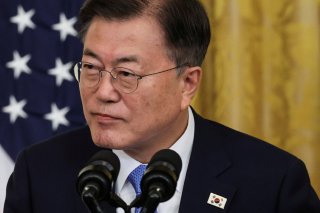Is South Korea Truly a ‘Middle Power’?
In the Indo-Pacific region, it is postulated that South Korea, Australia, and Indonesia (or even ASEAN) could join hands and impact Sino-U.S. relations. There is no sign of this nor any reason to think that shared middle power interests would outweigh the much stronger pull of the great powers.
A middle power is a state that has the capabilities to exert influence, at least at a regional level, and relationships with great powers that allow it to utilize these capabilities. It would be a mistake to assume that this gives the state leverage to play a balancing role between great powers, Rather, the most common role of a middle power is that of an indispensable partner of a single great power with a limited ability to act autonomously in trying to sway one or more other great powers’ behavior. In this respect, the South Korean state is a middle power, although this rhetoric at times exceeds reality.
Seoul is a close ally of the United States with some autonomy in its policies toward China, Russia, and Japan. In 2014, its response to the U.S. and G7 sanctions against Russia reflected restrained autonomy, as Park Geun-hye and, later, Moon Jae-in persisted in overtures (Eurasian diplomacy, New Northern Strategy) meant to keep Vladimir Putin from tilting too much to North Korea. In 2015, Park’s hard-line toward Japan on “comfort women,” and in 2017 Moon’s threat to pull out of the General Security of Military Information Agreement (GSOMIA) intelligence sharing agreement drew strong U.S. pressure, reining in excessive autonomy. Also, in 2016, by agreeing to the Terminal High Altitude Area Defense (THAAD) missile defense, and again in 2021 in the joint statement at the Moon-Biden summit, Seoul tilted to Washington, reducing somewhat the autonomy of its policy toward Beijing. Yet in 2021 elements of autonomy persist, which the Biden administration cautiously accepts, recognizing the special nature of North Korean and Chinese ties.
Other definitions of middle power convey national identity aspirations more than the restrictive circumstances of South Korea’s confined space among four great powers and an existential threat in North Korea. Only a realistic understanding of this term from a comparative perspective clarifies its situation.
Military power is least amenable to the quest for autonomy. Economics is the venue of the greatest flexibility. Diplomacy is intermediate between the two, as seen in Moon Jae-in’s defiance of the United States in agreeing in late 2017 to the “three noes” demanded by Xi Jinping, which put limits on the alliance aspirations of the United States. Culture is second to economics in autonomy, but it is becoming less of a venue for autonomy, as the ideological polarization in Sino-U.S. relations intensifies. On human rights—whether “Free and Open Indo-Pacific,” Hong Kong, or Xinjiang—U.S. pressure has mounted, albeit as the case of the Dalai Lama shows, deference to China is still present.
Along with aggrandizing the potential of a middle power in balancing great powers, some advance the illusion of a consortium of middle powers able to influence great power relations. For instance, in the Indo-Pacific region, it is postulated that South Korea, Australia, and Indonesia (or even ASEAN) could join hands and impact Sino-U.S. relations. There is no sign of this nor any reason to think that shared middle power interests would outweigh the much stronger pull of the great powers. The notion of “middle powers” has played into idealistic pretenses that work against the balance of power realism.
Gilbert Rozman is the Emeritus Musgrave Professor of Sociology and the editor-in-chief of The Asan Forum, a bi-monthly, online journal on international relations in the Indo-Pacific region.
Image: Reuters.

